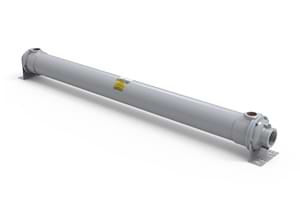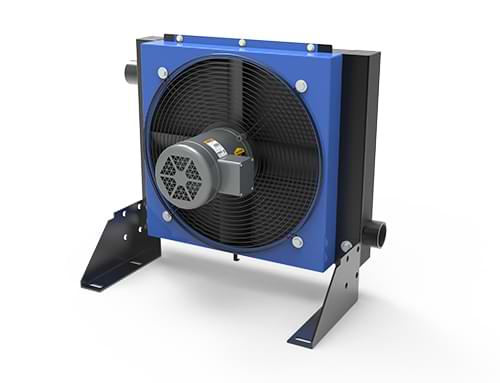Aftercoolers for Injection Molding Machines
Aftercoolers, also known as intercoolers or heat exchangers, are employed to manage heat dissipation during the cooling phase, optimizing the process. By rapidly reducing the temperature of compressed air or coolant used in the system, aftercoolers help maintain consistent mold temperatures, reduce cycle times, and improve part quality.
Applications
- Mold Cooling: Aftercoolers regulate the temperature of coolant circulated through mold channels, preventing overheating and ensuring uniform cooling. In producing precision parts like medical device components, consistent cooling is critical to avoid warping or shrinkage.
- Air-Assisted Ejection: In high-speed production lines, such as those manufacturing bottle caps, cooled compressed air is used to eject parts quickly without damaging them, reducing cycle times.
- Hydraulic System Support: Aftercoolers cool the air or fluids in hydraulic systems that control mold clamping, ensuring reliable performance during continuous operation, as seen in automotive part production.
Water Cooled Aftercoolers
Compressor Cooling
- Fixed or Removable Tube Bundles
- Material Options Available
- Standard and Custom Options

Air Cooled Aftercoolers
Compressor Cooling
- Use Ambient Air to Cool
- Variety of Motor Options
- Standard Pressures of Up To 250 psi

Aftercoolers for Injection Molding
The primary function of an aftercoolers in injection molding is to remove excess heat from the compressed air systems that power machinery or cool molds. Compressed air, often used to eject parts from molds or operate pneumatic systems, heats up during compression. Without proper cooling, this hot air can lead to inefficiencies, such as prolonged cooling times or thermal stress on components. Aftercoolers mitigate these issues by cooling the air before it enters the system, ensuring smooth operation and extending the lifespan of equipment.
A practical example can be observed in the production of thin-walled plastic packaging, such as yogurt containers. Here, an aftercooler ensures rapid and uniform cooling of the mold, preventing defects like uneven wall thickness. Manufacturers like Husky Injection Molding Systems often integrate aftercoolers into their setups to achieve tighter tolerances and faster production rates.
Aftercoolers' versatility shines through in all sorts of applications, from tiny, intricate pieces like medical syringe tips to hefty industrial parts like car bumpers. In a fast-paced shop making smartphone cases, for instance, aftercoolers ensure the molds cool evenly so every case pops out flawless, ready for the next one in line. Over in a plant churning out rugged construction equipment components, they keep the heavy-duty hydraulic systems from overheating, maintaining steady performance through long shifts.


